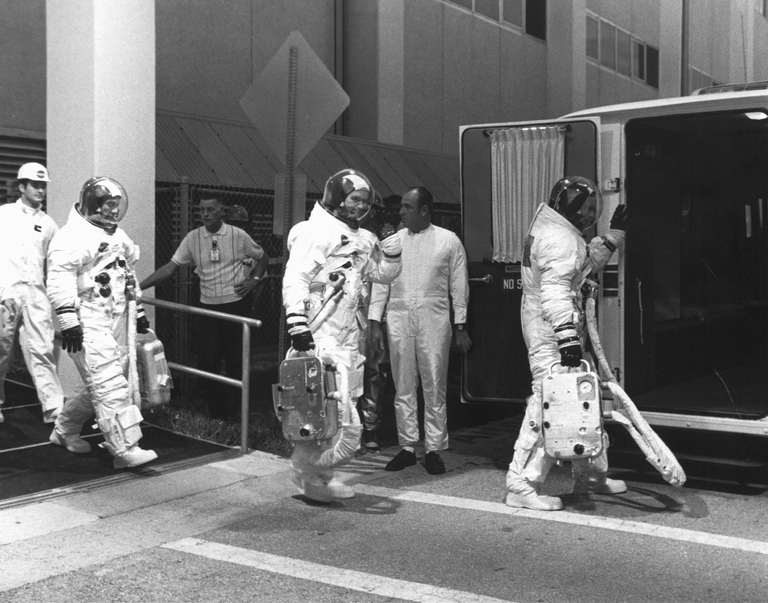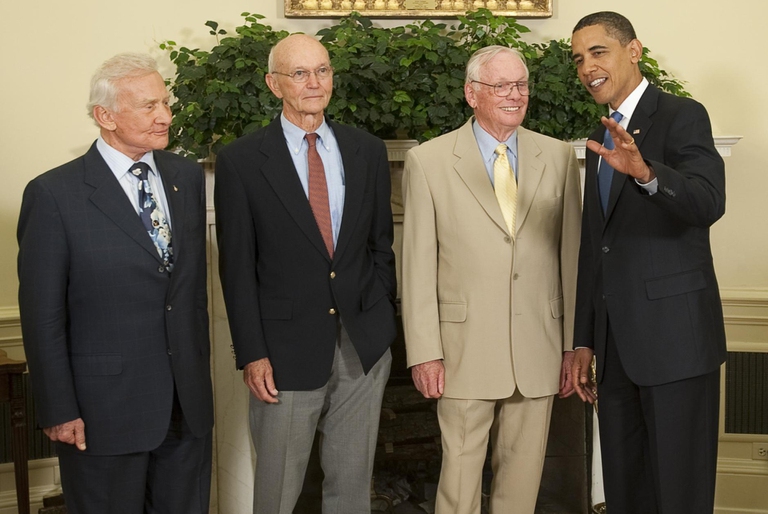https://www.lifegate.it/michael-collins-apollo-11
- |
“The thing I remember most is the view of planet Earth from a great distance.Tiny, very bright, white and blue.Beautiful, calm and so fragile."This is how he recounted the memory of that trip 52 years ago Michael Collins, former astronaut of the NASA, who died on April 28, 2021.Collins was part of the crew ofApollo 11, along with Neil Armstrong and Buzz Aldrin, mission that first brought man to the Moon in 1969.The family announced the death.

“Mike has always faced life's challenges with grace and humility, and he has met this latest challenge in the same way,” his family said in a statement.“We will miss him terribly.Yet we also know how lucky Mike was to have lived the life he did."
Michael Collins and the Apollo 11 mission
Collins, during the mission, remained in lunar orbit while Armstrong and Aldrin descended to the lunar surface, forever marking the history of space exploration and becoming the first men to ascend to the surface of another celestial body.Almost overshadowed by that historic walk, instead it played a fundamental role in bringing the entire crew home:orbiting at over 100 kilometers for more than 20 hours, he was “almost forgotten” and considered one of the loneliest men in history, while his colleagues walked on the Moon for the first time.
In the book "Carrying the Fire” he wrote, describing the moment in which he lost radio contact with the Earth, orbiting around the dark side of the Moon:“I'm alone now, truly alone and absolutely isolated from any known life.I am this.If you did a count, it would be three billion plus two on the other side of the Moon, and one plus God knows what's on this side."

In a 2009 statement he said:“I know I would be a liar or a fool if I said I had the best of the three seats on Apollo 11, but I can say with sincerity and equanimity that I am perfectly satisfied with what I had.”
The origins and life of Michael Collins
Michael Collins was born on 31 October 1930 in Rome, where his father worked as a soldier at the US embassy in Italy.He graduated from Saint Albans School in Washington, while in 1952 he completed his studies at the United States Military Academy at West Point.
From 1953 to 1963 he was a fighter pilot on Air Force One, logging more than 4,200 flight hours.In 1963 he was selected as a member of the NASA astronaut team and his first mission was as a Gemini 10 pilot, launched on 18 July 1966:the spacecraft's flight, commanded by John Young, set an altitude record:the rocket they were docked took them to an altitude of 766 kilometers (476 miles).
Including the Apollo 11 mission, Collins spent 266 hours in space. He also served as Capcom for Apollo 8, relaying information between mission control and the crew.Collins retired from the Air Force as a major general and left NASA in 1970 and became assistant secretary of state for public affairs.In 1971 he joined the Smithsonian Institution as director of the National Air and Space Museum.His responsibilities included the planning and construction of a new museum building.He became vice president of LTV Aerospace and Defense Co.in 1980.
He wrote several books:“Carrying the Fire” in 1974, “Flying to the Moon and Other Strange Places” in 1976, “Liftoff:The Story of America’s Adventure in Space” in 1988 and “Mission to Mars” in 1990.
